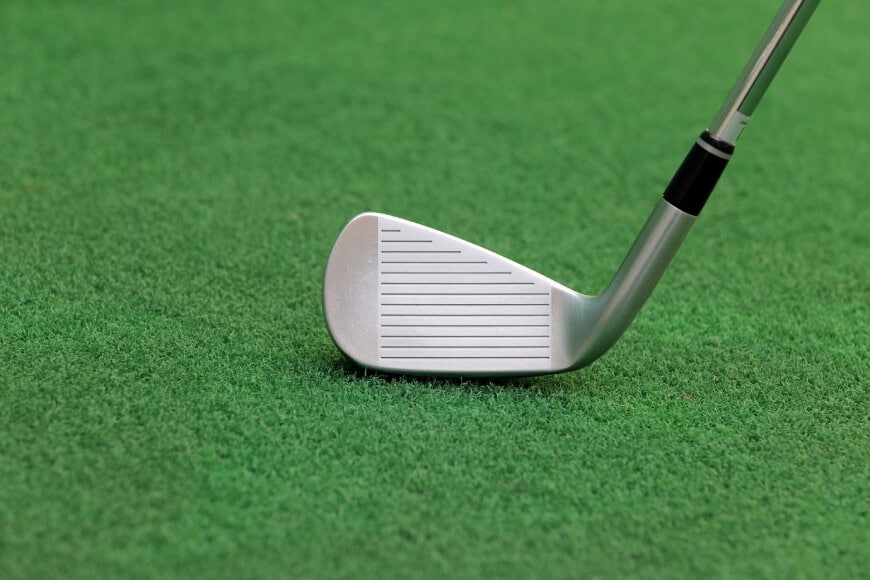In golf, only 14 golf clubs are allowed in your bag. But as a beginner, what type of wedges should you carry?
Are you rushing to know what wedges a beginner should carry?
It is not a rule, but the top two wedges beginners should carry are the pitching wedge and sand wedge. As a beginner, you ought to know why experts suggest this fact.
Two Topmost Wedges Beginners Should Bring in Their Bag

In golf, there are four kinds of wedges: gap wedge (GW), lob wedge (LW), sand wedge (SW), and pitching wedge (PW). All of these clubs are ideal for short games. But the limited number of clubs (14 or fewer) you can carry lets you pick the most appropriate for you.
I am an experienced golfer carrying three wedges. But beginners need only two wedges. I recommend you bring a pitching wedge and a sand wedge. They are the top choice for beginners. Learn more about these wedges below.
Read more: Best Hybrid Golf Clubs for Beginners and High Handicappers.
1. Pitching Wedge
The pitching wedge usually comes with a loft between 46 and 48 degrees, depending on the model. You can rely on a pitching wedge when doing shots off the tee and when approaching the green. It has a bounce different from a sand wedge and is ideal for medium and long-distance shots.
The pitching wedge can deliver 100 to 110 yards for an average male golfer: Female golfers can do it from 70 to 120 yards. Beginners may achieve 80 yards (for men) and 47 yards (for women) utilizing a pitching wedge. But many golfers use a pitching wedge for approach shots.
We recommend the Callaway Mack Daddy CB Wedge as one of the best choices for a pitching wedge for beginners. The Mack Daddy’s broad range of lofts and bounce combinations suits many beginners.
2. Sand Wedge
Sand wedges can bring you out of tight spaces. It is the most appropriate club for beginners in short distances. That is why the sand wedge and the pitching wedge are ideal partners because they cover different distances. I suggest you bring a 54-degree sand wedge as a starter.
The SW is a more versatile golf club that helps you strike in full-, half-, or chip shots. Furthermore, as its name suggests, it is the ideal club out of the sand. The flat and wide soles of sand wedges prevent them from digging into the sand. It is a common occurrence for beginners to hit the sand more often.
We highly recommend the Cleveland Golf 2020 Smart Sole G 4.0 Wedge. This affordable wedge has increased forgiveness you can rely on at any time.
Why Is It Crucial to Carrying These Two Wedges
The parameters below explain why a beginner should carry the pitching and sand wedges first and foremost.
1. Distance
The gapping distance between the two clubs is the primary reason you should carry these wedges. We already know wedges provide the needed spin and control, but you should have a club that fills the distance gap.
Since these two wedges deliver different ranges, they provide you with continued distance until you arrive near the pin.
2. Control
The sand and pitching wedges give you optimum control on short games. As you go along the course, the pitching wedge makes the necessary shots while approaching the green. But using a pitching wedge in short chips or bunker shots might give you a headache. The sand wedge becomes your new ally in engaging these obstacles.
3. Spin
Pitching wedges provide more spin than irons. They deliver better distance once you hit them with control and speed. The ball speed and spin integration give you more distance and control than using an iron. Golfers substituting, say, a 9-iron for a wedge with the proper loft may lose their needed spin.
The sand wedge consequently provides you with added spin, launching the ball higher, and then it stops abruptly upon landing. The increased spin lets you control a chip shot better. As we already know that high-loft clubs deliver adequate spin and prolong distance. Combining the average-spin pitching wedge and the high-spin sand wedge lets you attain more control on the green.
Extra Wedge Intermediate Golfer May Carry
Gap Wedge
If you are an intermediate player: we recommend carrying a gap wedge in your bag as an additional club. The gap wedge is more suitable in fuller shots. It fills the gap in distance between the pitching wedge and the sand wedge, as the name implies.
The gap wedges usually have lofts between 50 and 53 degrees, enough to sustain long chip shots on a full swing. The clubs are also ideal for bump & run shots, pitch shots: and bunker shots.
Extra Wedge an Advanced Golfer May Carry
Lob Wedge
A lob wedge is also called the L-Wedge or the lofted wedge. More experienced players rely on this club for short-hitting as it provides the most loft on a shot. Lob wedges usually come with 60 to 64 degrees of loft.
As you become more skilled in golf, you begin striking the ball with a high arc to avoid hazards. The lob wedge is perfect for hazards and other high obstacles, like trees or hills. The lob is also a quick stopper: when you want to decrease the ball roll upon landing.
Does A Beginner Need A 60-Degree Wedge?
A golf club with a 60-degree loft falls as a lob wedge. But a beginner may not be suitable for the features of this type of club. A lob wedge is considered a golf club ideal for experienced golfers, especially the 60-degree loft.
The club requires a lot of practice until you get what you desire. The lob wedge can also get you out easily in thick and damp greens and tall hazards. I advise you to practice more using a lob wedge before you go on an actual play.
Should I Add A Fourth Wedge?
It depends on your needs and skill set. If you have a hard time using wedges with a 6-degree loft variation like the 48, 54, and 60 degrees: you should consider adding a fourth wedge. But what is the ideal wedge to add? A lob wedge is what we recommend.
Should A Beginner Use A Lob Wedge?
Beginners should not carry a lob wedge. If you need it, a 56-degree LW is more recommendable. I have observed in my years of golfing that many beginners can hit a lob wedge on a 30 to 50-yard range.
If you need to do a very short chip shot while you are not comfortable with sand wedges: a lob wedge may suit you. As a beginner with lots of guts pursuing an objective, keep practicing using a lob wedge to hone your craft.
What Wedges Should A High Handicapper Carry?
Golfers with a high handicap should pick the 56-degree wedge before anything else. The other wedges that high-handicap players should consider are the 52-degree and 56-degree wedges. Carrying these wedges gives high-handicap players a variety of shots.
Advantages of Using the Correct Wedge

In golf, like in any other game, the correct equipment counts a lot. It also follows that beginners in any game should have the appropriate tool to compensate for their raw skill.
Beginner golfers will benefit if they choose wedges that offer the correct loft. These wedges will help them get out of bunkers in the fairway. The proper wedges also enhance a beginner’s chipping shot accuracy.
FAQ’s
If you are a beginner, you should carry the pitching and sand wedges. This combination is more suitable for beginners to achieve the perfect gaps between golf clubs in getting the loft gaps.
Once you have the pitching and sand wedges as your first two choices, add the gap wedge as a third pick. This club fills the distance and loft gaps between the PW and SW.
A gap wedge may travel 90 to 100 yards of distance when properly used. It is an excellent choice for beginners. The gap wedge suitable for beginners should have a 50 to 52 degrees loft.
Average golfers don’t need to carry 56- and 60-degree wedges. You can pick one and combine it with a lower or a higher loft wedge.
There is no restriction on how many wedges you carry in your bag. It does not matter if you bring a lob wedge, a pitching wedge, a sand wedge, or a gap wedge. You can use all these wedges as long as there are 14 or fewer golf clubs in your bag when the game starts. But, as a beginner, it is more recommendable to carry just two wedges.
Conclusion
So, what wedges should a beginner carry? As we reiterate, the wedges a beginner should carry generally are the pitching and sand wedges. It is the combination more appropriate for beginners.
The 46-degree pitching wedge is a more beneficial starter club, combined with a 54-degree sand wedge. If you need a third and fourth wedge, the best options are the gap wedge (50 degrees) and lob wedge (60-degree).
Read more: Sand Wedge Bounce: 10 or 14
Matt Stevens is the founder of Golfrough.com. He holds a Postgraduate in Sports Marketing and has played golf since he was four years old. Having experienced every high and low golf has to offer, his writing helps the average golfer avoid the mistakes he has made in 28-years on the course.

